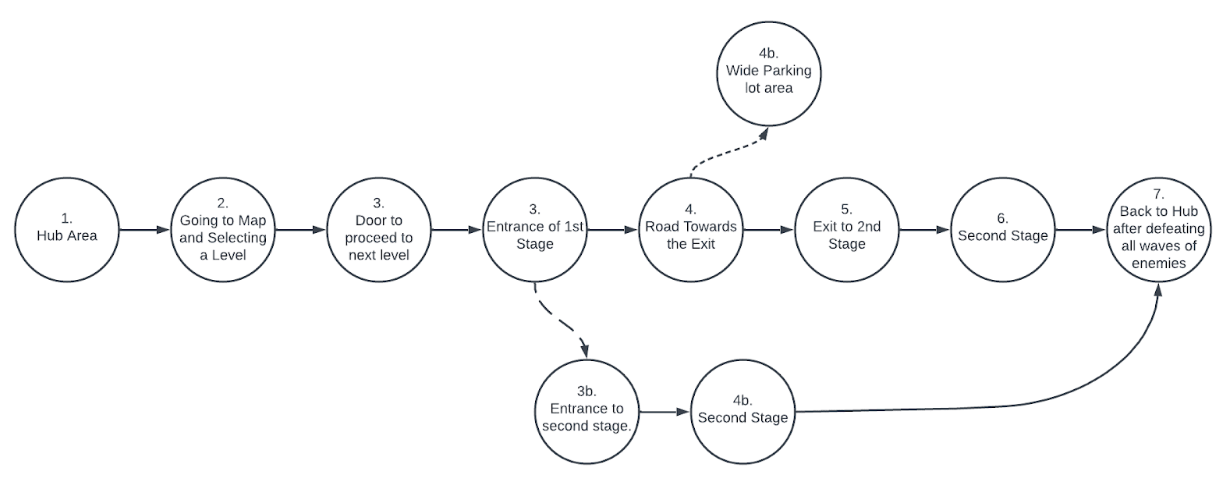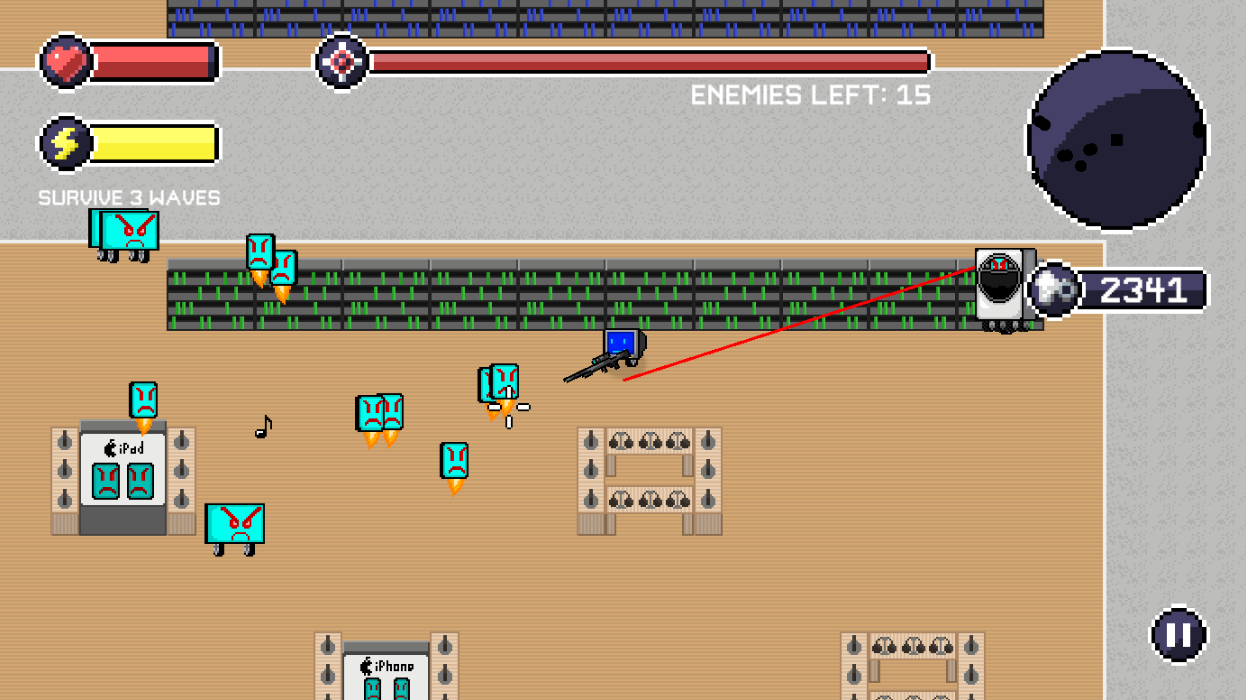Derian Sera
Slow and Steady
A challenging top-down shooter game
The Advanced Game Design course at SFU is something I attribute much of my skill set to. In a team of four, we were given the full four months of the course to create any kind of game we could think of, so long as it had at least three levels and multiple enemy types. With limited time, we looked for efficiencies from the NES era, where the longevity of the games was created by players being forced to improve through failure. We then decided on a top-down shooter using brutally difficult modern sprite-based games Enter the Gungeon and Nuclear Throne as inspiration.

Our initial ideation generated the most friction in the group. The others were set on going with a proven concept by making the main character a soldier or a space marine, but I pushed for a different direction. In an effort to think outside the box and create something unique, I presented the idea of an old CRT TV fighting against AI controlled smart devices. My team’s initial resistance to the idea disappeared as we began to build on the core design and flesh out the world and its characters, all with my single concept sprite leading the game’s direction.
After working out responsibilities, I continued with designing enemies, focusing on wacky concepts that would be fun to kill even when the player had seen them many times, like laptops that shot keyboard keys at you, or a router that called in extra smartphone enemies if left alive. I also conceptualized abilities they would have so each character would feel unique besides the visuals.


I also started laying out levels. I created an overview map to plan the enemy placement and pickups, as well as the player’s intended route through each area.
Leading the overall ideation, I also planned the general progression of the game with a path layout graph as part of our GDD.

Collaborating with the lead programmer, I programmed much of the logic for aiming and shooting, as well as implementing all of the levels I designed through tilemaps and colliders.

This was the first major project I completed, and it gave me my first real experience of working with a cohesive team. We worked incredibly well together and it made me even more excited to contribute to more team environments.